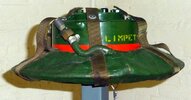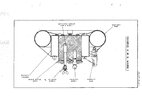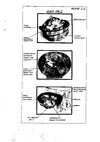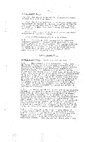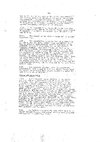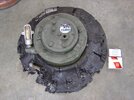British Ordnance Collectors Network
You are using an out of date browser. It may not display this or other websites correctly.
You should upgrade or use an alternative browser.
You should upgrade or use an alternative browser.
ID LIMPET
- Thread starter MINENAZ16
- Start date
Hi MINENAZ16
This is an example of a British Underwater Swimmer Charge Mk I. It used an inflatable rubber ring, powered by a Co2 capsule to give the charge positive buoyancy to hold it against the ship's keel and was initiated by a Mk II AC Delay. The charge container also incorporated a countermining pistol for sympathetic detonation. Developed by the Admiralty. I will try and find some references for it when I have more time.
Cheers
Switch
To complete the information from the very valuable "Technical History of Miscellaneous Underwater Weapons, 1939-1945", the UWS MKI (also referred to as "UWS Type A") was the copy of the Italian designed "cimice" (also referred to as "mignatta" or "cassetta speciale") and it was devised to supply the personnel of Mariassalto that, after the Italian armistice, moved to Taranto with very little equipement and none industrial backup to rebuilt it. The guys from Mariassalto already gave willingness to fight in the far east along with OSS and British personnel, hence they needed the battle proven instruments that they used during the war. Other ordnances were reproduced for the same purpose.
It is interesting to notice that the British recovered a sample of the "cimice" back in 1942 but never showed interest to develop their version until 1944.
The pictured specimen of the UWS MKI is on display at the Explosion Museum of Naval Firepower, Gosport.
It is interesting to notice that the British recovered a sample of the "cimice" back in 1942 but never showed interest to develop their version until 1944.
The pictured specimen of the UWS MKI is on display at the Explosion Museum of Naval Firepower, Gosport.
Very interesting infos, but I come with 2 questions :Afternoon all - A bit more information on the U.S.C. Mk I which I hope will help.
View attachment 193059View attachment 193060View attachment 193061View attachment 193062
Cheers
Switch
Does anybody has documentation about the "Countermining Pistol Mk 1" ?
Does anybody has photos of the "U.W.S. charge Mk 2" ?
Maybe something like this for the C/M pistol : https://www.bocn.co.uk/threads/smd-isrb-sympathetic-fuze.97972/#post-290546

